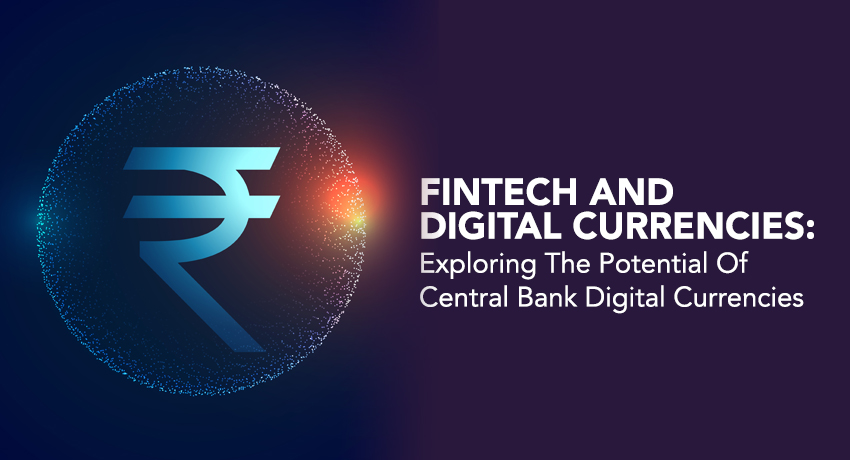Fintech and Digital Currencies: Exploring the Potential of Central Bank Digital Currencies

The emergence of financial technology (fintech) in recent years has transformed the way we conduct financial transactions. The rise of digital currencies is one of the most significant developments in the fintech industry. While cryptocurrencies such as Bitcoin have gained popularity, central banks around the world are investigating the possibilities of central bank digital currencies (CBDCs). So, here we explore the potential of CDBCs.
- Financial Inclusion and Banking Service Access
CBDCs have the ability to address the difficulties of financial inclusion by offering universal access to basic financial services. Individuals who do not have traditional bank accounts can use CBDCs to get a digital wallet that is directly linked to the central bank, allowing them to engage in the digital economy and access important financial services. This empowers unbanked and underbanked people while also encouraging economic growth and decreasing disparities.
- Efficiency and Cost-cutting
CBDCs can streamline financial transactions by minimizing middlemen and associated expenses by harnessing the benefits of block chain technology. Real-time settlement and instant peer-to-peer transactions are conceivable, removing the need for third-party payment processors and lowering transaction fees. This increased efficiency can benefit firms, consumers, and governments alike, boosting economic growth and decreasing friction in the financial system.
- Financial Stability and Regulation
CBDCs strengthen central banks’ visibility and control over financial transactions. The use of block chain technology allows for increased monitoring capabilities, which aid in the discovery of illegal acts such as money laundering and fraud. Furthermore, CBDCs can serve as an additional policy tool for managing monetary policy, thereby enhancing financial stability and resilience.
- Transactions and Remittances Across Borders
CBDCs have the potential to make cross-border transactions more efficient, transparent, and cost-effective. CBDCs can efficiently facilitate remittances, which are critical for many developing economies, by decreasing fees and delays associated with traditional money transfer systems. This has the potential to boost economic growth and enhance the livelihoods of individuals and families who rely on remittances.
- Innovation and the Fintech Ecosystem
CBDCs can promote innovation in the fintech environment. CBDCs enable the development of smart contracts and decentralized apps (DApps) by offering a programmable infrastructure, thereby opening up new possibilities for automated financial services and novel financial solutions. This fosters technical developments and a thriving fintech sector.
Key Principles of CDBCs

Indian Digital Currency Program
The Reserve Bank of India (RBI) launched a digital rupee pilot programme in the wholesale sector, on November 1, 2022. Our Indian Digital Currency (IDC) would be used as a cryptocurrency in our country. This digital money would give our country’s economy a boost and help it grow.
What is the RBI’s take on CBDC?
- A redesigned and computerized form of physical currency, similar to sovereign paper currency.
- Exchangeable at par with present currency and acknowledged as a medium of payment.
- A lawful tender and a safe deposit of value.
Conclusion
Central Bank digital currencies have the potential to transform the financial landscape, providing several benefits ranging from financial inclusion and efficiency to improved regulatory supervision. However, CBDC deployment necessitates careful consideration of a number of aspects, including privacy problems, cybersecurity, scalability, and interoperability with existing financial systems.
Collaboration between policymakers, financial institutions, and technological specialists is critical as central banks throughout the world continue to explore and trial CBDC projects. To exploit the revolutionary potential of CBDCs while resolving issues and ensuring that digital currencies contribute to a more egalitarian, efficient, and sustainable financial future, an inclusive and transparent strategy is required.

